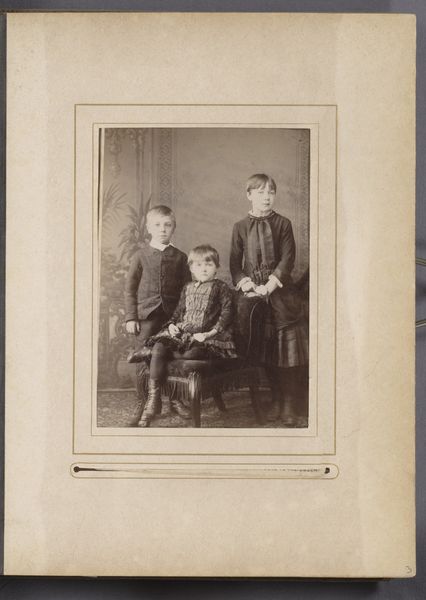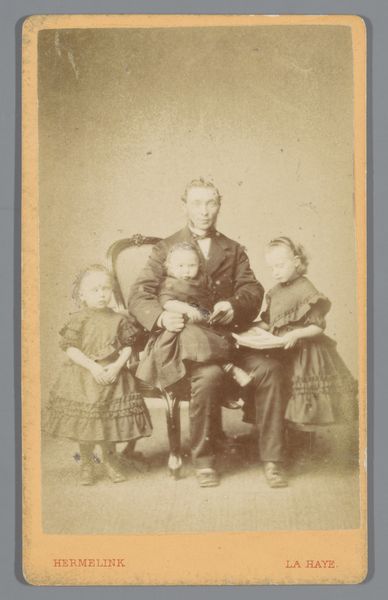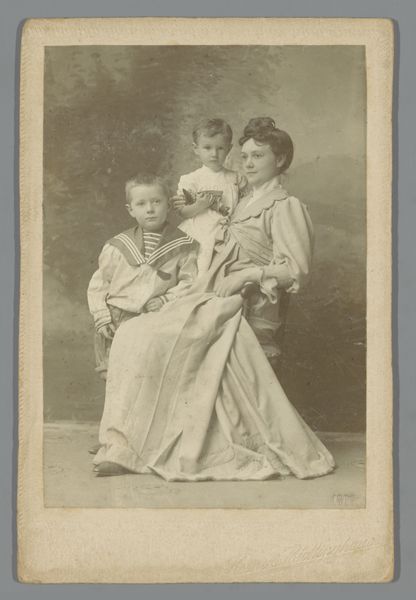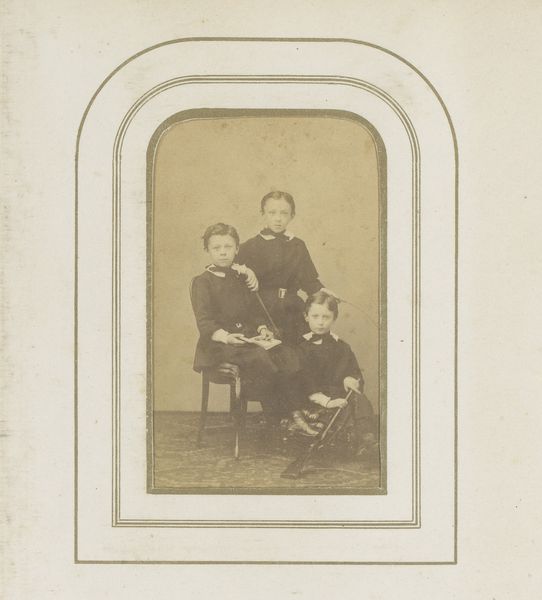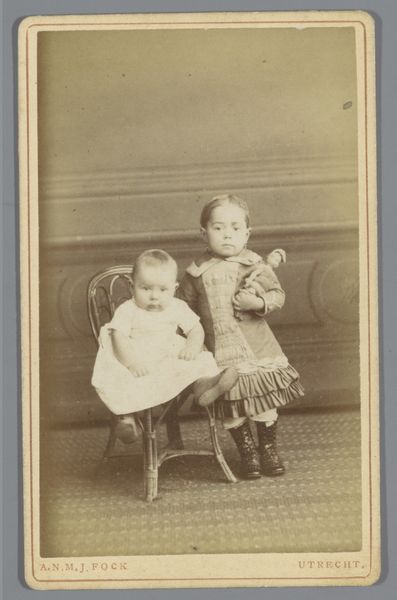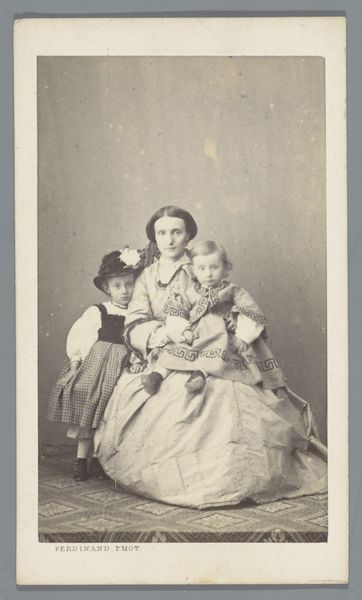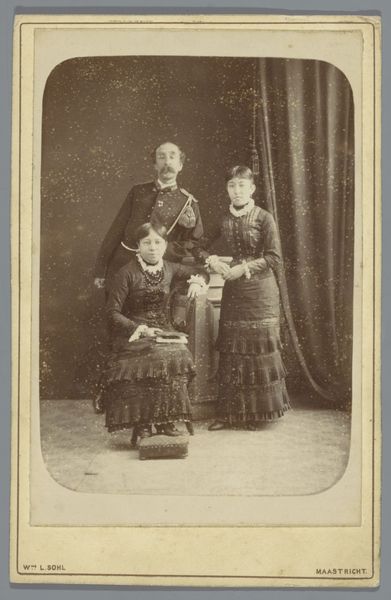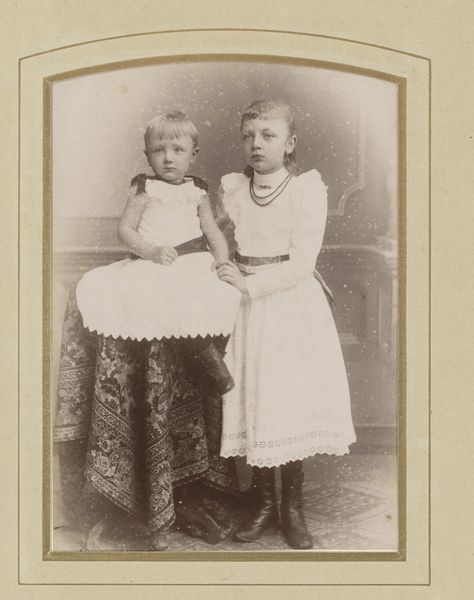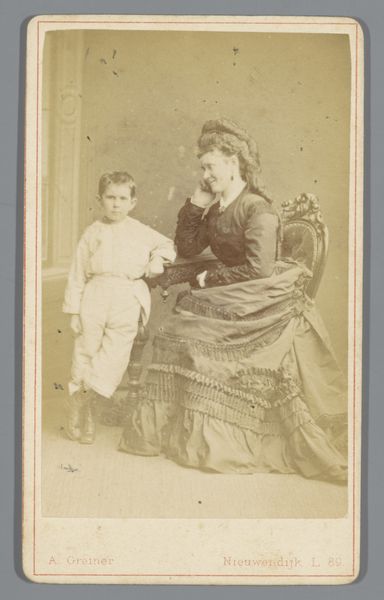
photography
#
portrait
#
photography
#
genre-painting
#
realism
Dimensions: height 104 mm, width 64 mm
Copyright: Rijks Museum: Open Domain
This photograph of three children was made by Bernardus Bruining using the 19th-century albumen print process. This technique involved coating paper with a layer of egg white and then silver nitrate, creating a surface sensitive to light. Looking closely, you can see the subtle tonal range achieved through this method. The light delicately graces the children's faces and clothing, bringing them to life. The texture of the paper adds a tactile quality to the image. Photography in the 19th century was a laborious process. It needed careful preparation and precise timing. As photography became more popular, studios emerged, providing a space for professional photographers like Bruining to capture portraits of families and individuals. This democratization of image-making democratized the concept of portraiture, which was previously a privilege of the wealthy. Considering the time, labor, and artistry involved in creating this photograph, we can appreciate it not just as a record of three children, but also as a tangible artifact of a particular moment in the history of visual culture.
Comments
No comments
Be the first to comment and join the conversation on the ultimate creative platform.

